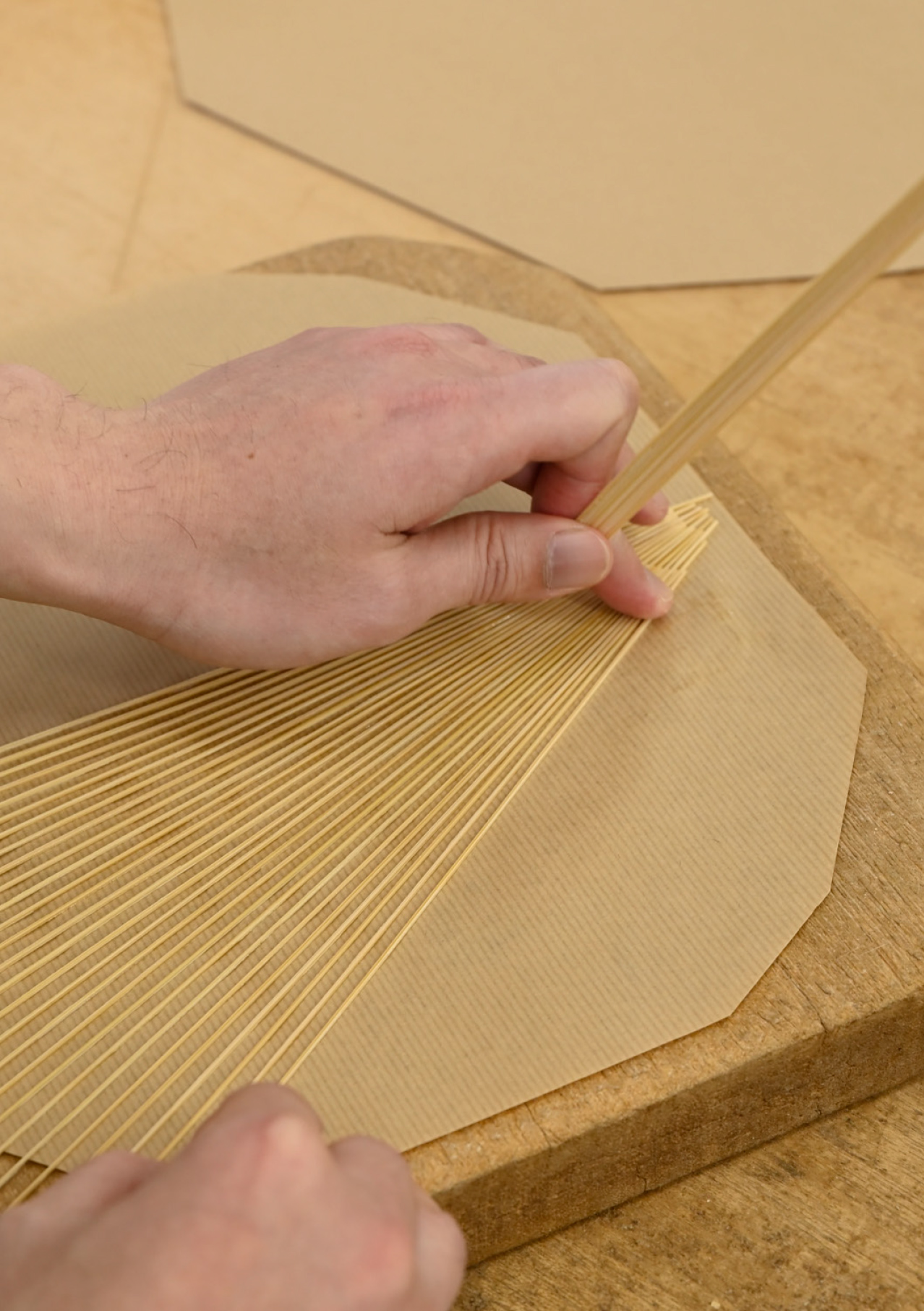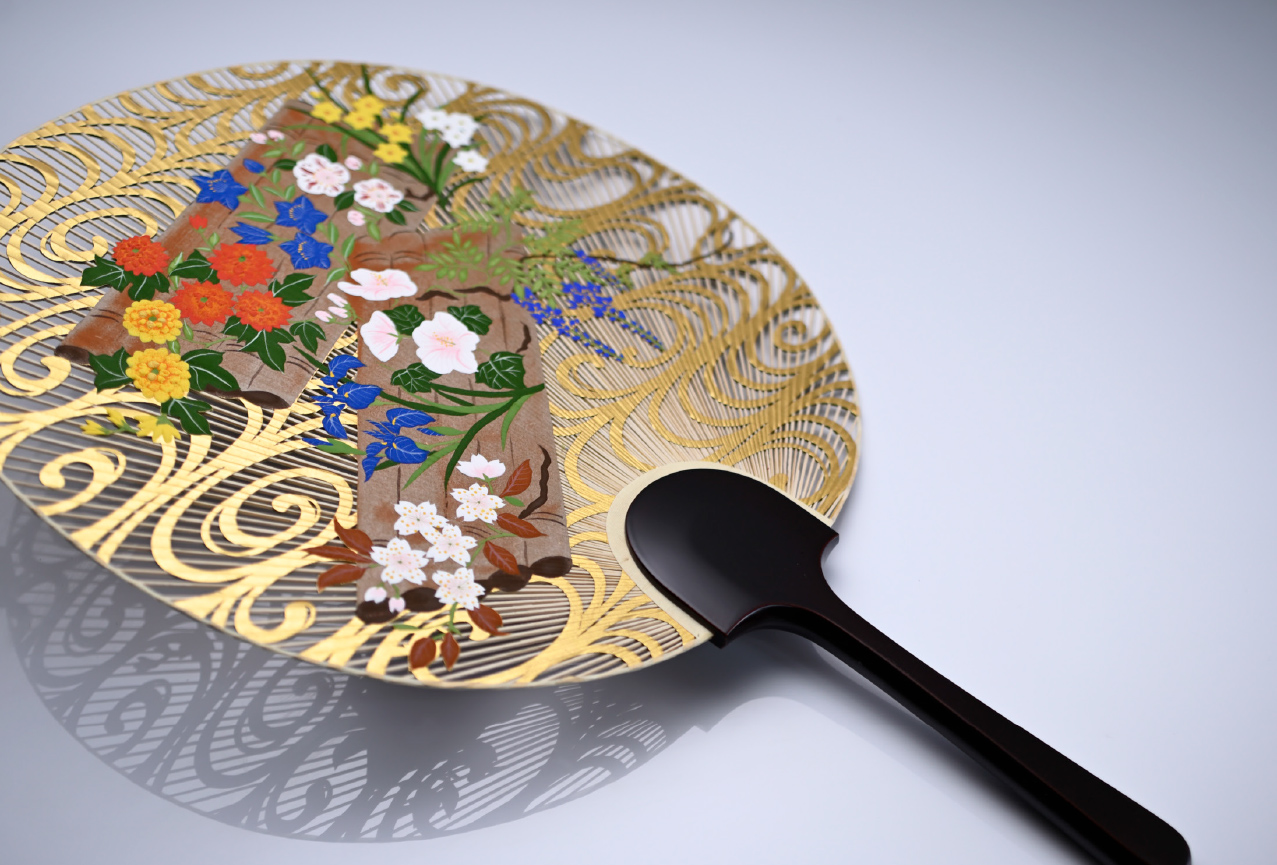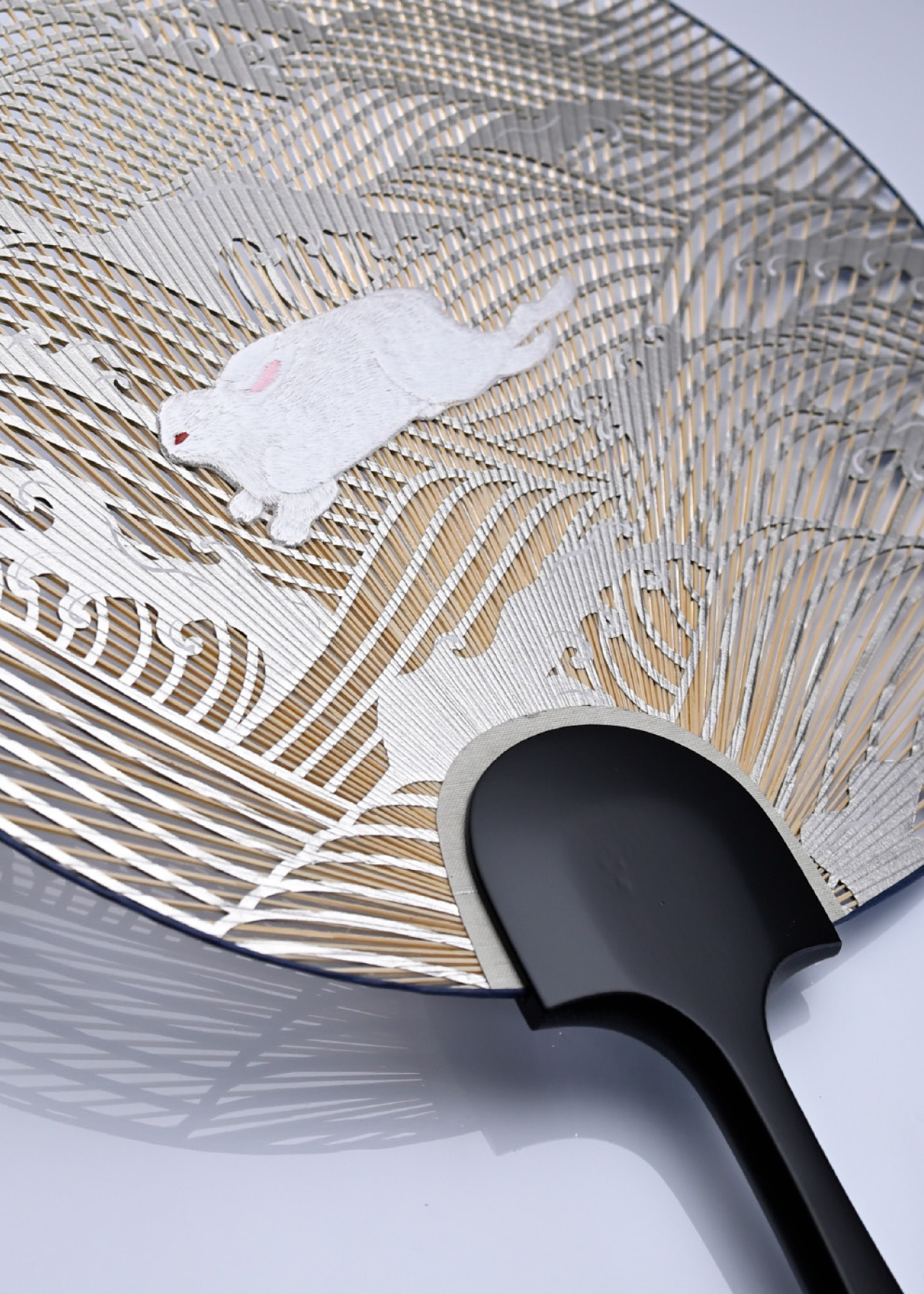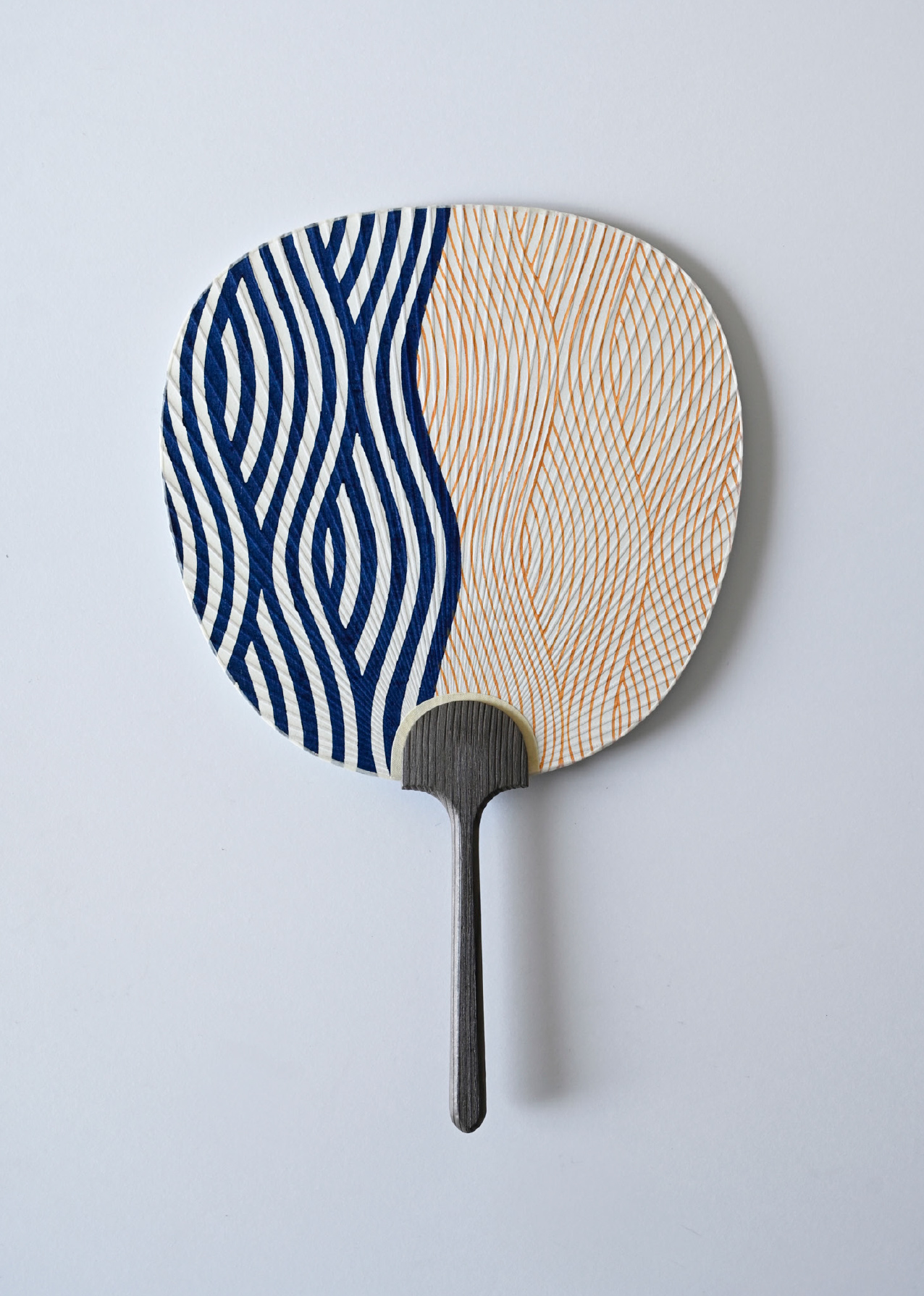京うちわ 京都扇子団扇商工協同組合
KYO-UCHIWAHANDHELD FAN 1
1
- 竹の繊維に沿って手で割いた細骨をハトロン紙に貼り、形を整える。
中国の周時代(紀元前3世紀)にすでに存在していたといわれるうちわ。日本に伝わったのは飛鳥時代から奈良時代(6〜7世紀)頃と考えられています。元は祭礼などで貴人や女性が顔を隠すために用いたり、武将が号令の際に手にしたりと、さまざまな用途がありましたが、18世紀頃には庶民が涼を取る身近な道具として定着しました。同時に、役者絵や季節の花々など、華やかな模様のものが作られ、贈答用としても用いられるようになりました。日本全国で生育する竹を素材とするうちわは各地で作られていますが、京うちわは、竹の細骨を1本ずつ放射状に並べた団扇面に、別に作った把手を組み合わせる「挿し柄」の技法が特徴で、柄は金彩をほどこした漆塗りなどの贅沢なものも。目から涼を感じる装飾品としての「透かしうちわ」も、日本ならではの風流な一品です。
Handheld fans date as far back as the Zhou dynasty in China (3rd century BC). They are believed to have been introduced to Japan during the Asuka and Nara periods (6th to 7th centuries AD). Originally, the fan was used by women and the nobility to hide their faces during religious festivals, or by military commanders when giving orders, but around the 18th century it became a familiar tool for the common people to cool off. At the same time, fans were given as gifts and decorated with beautiful patterns such as representations of actors or seasonal flowers. Fans are made in various regions of Japan from the bamboo that grows all over the country, but Kyo-uchiwa are characterized by the "insertion pattern" technique (sashie) in which bamboo fan bones are arranged radially one by one, then inserted into a separately-made handle. Kyo fans are also distinctive for their luxurious patterns such as those made from gold lacquer-work. The "Watermark fan" (sukashi-uchiwa) is highly refined decorative item, a stylishly elegant way of keeping cool.
 2
2
 3
3
 4
4
- :箔押しや色紙象嵌などの技法を駆使した優美な「透かしうちわ」。
- : 団扇面の下の竹骨は約50~120本。多いほど高級とされている。
- : 風を起こし魔を打ちはらう縁起物でもある。
(1,2,3,4 すべて京うちわ阿以波)
1: The fine bones split by hand along the bamboo fiber are pasted on the kraft paper to shape it. 2: An elegant sukashi-uchiwa that uses techniques of foil stamping and inlaying on colored paper. 3: There are 50 to 100 bamboo bones under the fan surface. The higher the number, the higher the quality. 4: The fan is also an auspicious object that causes wind and strikes demons. (1,2,3,4 Kyo Uchiwa Aiba)

